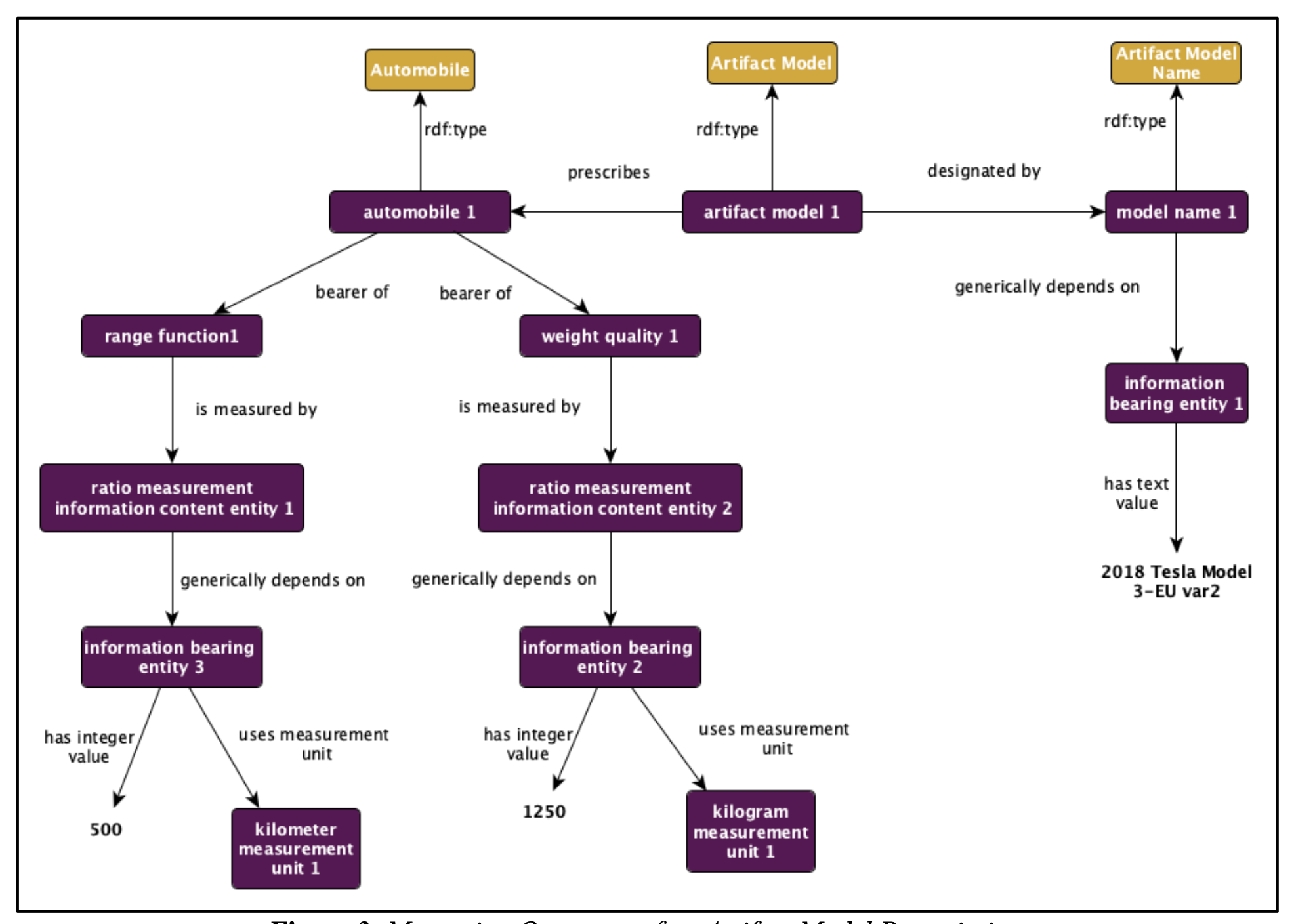Information Model
The Information Entity Ontology distinguishes content of information both from the information bearing entities which may carry that content and from the patterns exhibited by those information bearing entities. A computer monitor screen, for example, bears qualities such as shape and color that are said to concretize information content entities, i.e. generically dependent continuants that are about something. These distinctions allow for flexible representations of various relationships arising among information bearing entities, patterns, and information content entities. Any of the following patterns ‘π’, ‘pi’, ‘3.14...’, or ‘3.14159265358979323...’ on your monitor might concretize the same information content entity. Similarly, such patterns in a textbook would concretize the same information content entity.
Importantly, in making this trifold distinction, CCO denies that information transmission, provenance, and evaluation can be adequately represented without reference to information carriers. Carriers are, for example, crucial when modeling the provenance and pedigree of data across multi-modal sensors [24]. That said, users are not required to track provenance; CCO includes an annotation property "is tokenized by" to link literal values directly to instances of information content entity without having to represent relevant information content bearers.
Designative information content entities are used to uniquely denote entities, while directive information content entities consist of either propositions or images used to prescribe behaviors, actions, designs, etc. The class descriptive information content entity consists of propositions used to describe some entity and is the parent to the extensive collection of measurement and measurement unit CCO classes. CCO distinguishes what is being measured, information about what is measured, units encoding measurements, and the findings regarding measurements. For example, measuring John’s height in inches involves John, a length quality that inheres in John, the inch unit of measure, and the value associated with John’s height, e.g. “70”
To illustrate features of CCO’s information design pattern, consider that automobiles are often designed by agents or organizations according to some blueprint or modeling pattern. The Agent Ontology contains classes for agents, organizations, and roles borne by either. In CCO, agents are in every case those material entities capable of performing planned acts, i.e. acts directed by some directive information content entity. Moreover, by leveraging a sub-relation of participates in, namely agent in, CCO distinguishes between agents making causally relevant contributions to some process as opposed to passive contributions. For example, engineers working for Honda at some point created a blueprint for the Honda Civic, and so provided causally relevant contributions to the creation of this blueprint. Expanding on this example, CCO introduces the class artifact model, a directive information content entity that prescribes a common set of functions and qualities to inhere in a set of artifact instances. Instances of artifact model are, moreover, designated by specific artifact model names, such as “2018 Tesla Model 3-EU var2” which may similarly be represented using CCO resources

Given an artifact model prescribing the production features for a type of automobile, manufacturers also engage in planned acts the goal of which is to satisfy the artifact model prescriptions. Manufacturers may, for example, produce an automobile that is meant to bear a certain weight or have a certain transportation range function. These dependent entities will then inhere in the automobile produced and may be measured by some information content entity. As depicted in Figure 3, each ratio measurement information content entity corresponds to its own information bearing entity, which we may assume without loss of generality that in this case is part of some database or table. With respect to the weight of the automobile, the relevant database part has a literal value “1250” and uses measurement unit kilogram measurement unit.
Artifact models are rarely, if ever, faithfully produced. CCO resources allow for representations of the goals of an artifact model, the extent to which attempts to produce that model were successful, and manufacturer plans in pursuit of such production. When representing data reflecting failures of plans, missed opportunities, or perhaps even unobtainable goals, such nuanced representations are invaluable.